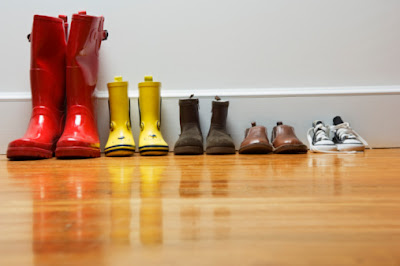

| Visitors Now: | |
| Total Visits: | |
| Total Stories: |

| Story Views | |
| Now: | |
| Last Hour: | |
| Last 24 Hours: | |
| Total: | |
What your choice of shoe says about you
When you meet a stranger, look at his shoes (from Good Advices by REM)
The UK’s fashionistas are abuzz after the Duchess of Cambridge was pictured at the weekend sporting a £300 pair of Le Chameau wellington boots. Does her shoe choice tell us anything about her? In a culture where so much attention is paid to the material we strap to our feet, a new study asks this very question more generally – how is shoe choice associated with personality and what assumptions do observers make about people based on their shoes?
The new research builds on an existing literature that’s shown we form impressions of strangers incredibly quickly, discerning a surprising amount of information about their sexuality, background and personality. However, much of the existing research on these thin-slicing abilities has involved participants looking at the faces of strangers, not their shoes.
Omri Gillath started by getting 208 undergrads (aged 18 to 55) to fill out numerous questionnaires about their personality and background, as well as submitting a photograph of “the pair of shoes they wear most often.” Next, a separate group of 63 undergrads each looked at a sample of these shoes and gave their best guess as to the personality and background of the wearers.
The participants in the role of observer tended to agree with each other in their judgments, suggesting that we make consistent assumptions about wearers based on their shoes, regardless of whether those assumptions are accurate or not.
In decreasing order, observers were most accurate in identifying the shoe-wearers’: age, gender, income, attachment anxiety (as measured by the wearers’ agreement with statements like “I worry that romantic partners won’t care about me as much as I care about them”) and their agreeableness. Observers were unsuccessful at identifying other aspects of personality such as political ideology, extraversion and conscientiousness, despite tending to agree with each other in their ratings of these traits.
So what cues did the observers use to make their judgments? First off, let’s look at some of their mistakes. The observers assumed that colourful and bright shoes belonged to an extravert person. In fact, the only shoe characteristics that correlated with wearers’ extraversion were being worn out and being of greater height (the top part, rather than the heel). Observers thought that attractive shoes in a good condition probably belonged to a conscientious person. In fact, the only relevant factors here were that conscientious people tended to have higher-topped shoes and to photograph them against a colourful background. And they assumed wrongly that less attractiveness shoes, with less pointy toes, in relatively poor repair, and low value price, probably belonged to someone with liberal political views. In fact there were no significant associations between political ideology and choice of shoe.
On the other hand, the observers discerned correctly that more agreeable people tended to wear shoes that were practical and affordable (pointy toes, price and brand visibility were negatively correlated with agreeableness); that anxiously attached people tended to wear shoes that look brand new and in good repair (perhaps in an attempt to make a good impression and avoid rejection); that wealthier people wear more stylish shoes; and that women wear more expensive-looking, branded shoes.
The study is obviously limited by its use of a narrow sample of Western university students. The assumptions observers make from shoes could be completely different in another culture, as could the links between shoe features and the traits of wearers. Another shortcoming is the reliance on the self-report ratings of the shoe wearers. Perhaps, for some of the personality factors, the observers were “seeing through” the shoe wearers’ idealised selves. “Do people buy and wear shoes strategically to portray an image, and can observers detect the ‘acquired image’?” the researchers asked. “These are fundamental questions in personality and social psychology, and they play out in many domains – shoes are merely one attractive alternative to research.”
_________________________________
![]() Omri Gillatha, Angela J. Bahnsb, Fiona Gea, & Christian S. Crandalla (2012). Shoes as a source of first impressions. Journal of Research in Personality DOI: 10.1016/j.jrp.2012.04.003
Omri Gillatha, Angela J. Bahnsb, Fiona Gea, & Christian S. Crandalla (2012). Shoes as a source of first impressions. Journal of Research in Personality DOI: 10.1016/j.jrp.2012.04.003
Post written by Christian Jarrett for the BPS Research Digest.
The Research Digest is a free blog and email newsletter published by the British Psychological Society and written by Christian Jarrett. Also find us on Twitter and Facebook.
Read more at BPS Research Digest
Source:



